Blocked or clogged nipple pores or milk blebs are a common problem for many new moms.
Basically, a clogged nipple pore happens when a clump of hardened milk blocks the nipple pore.
Consequently, your skin closes the nipple pore, which causes a milk blister. This dried milk in your nipple blocks the channels behind the nipple and can often be painful.
However, even though a clogged nipple pore is not comfortable to experience, it is also not a reason to worry. In fact, in most cases, you can treat this condition by yourself.
1. Salt and warm water
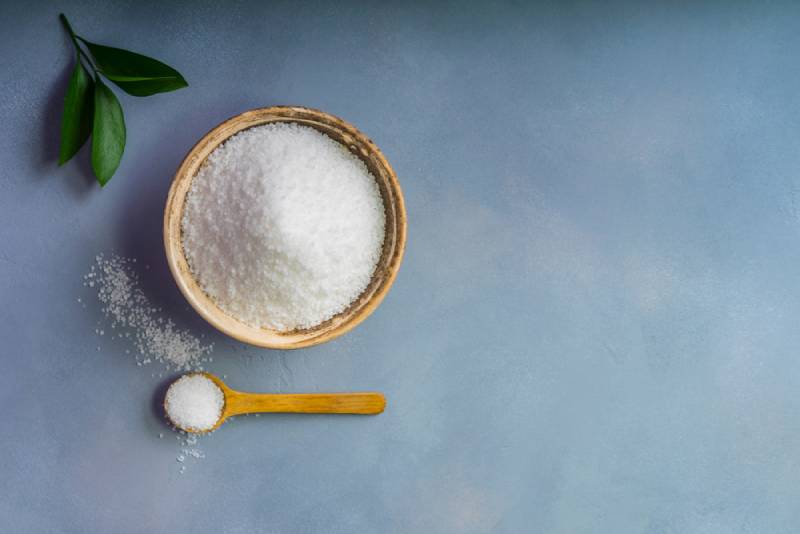
The first and one of the most effective ways to treat a milk blister is actually incredibly simple.
You don’t need any modern, fancy tools to help your affected breasts. Instead, all you need are two ingredients all of us have in our kitchens.
Believe it or not, the way to resolve your milk blisters is with the help of Epsom salt and hot water.
All you have to do is make a saline soak. You put a tablespoon of Epsom salt into some warm water and then let it cool for a while.
Once cool, bathe your nipples in this saline soak.
Repeat the procedure at least three times a day (if you have time, you can do it more frequently) and continue doing it until you see some improvement.
2. Vinegar
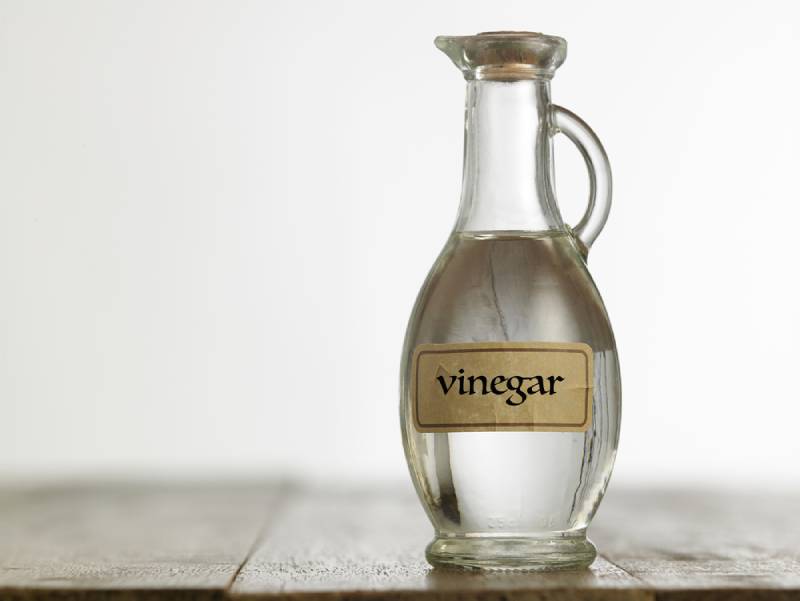
If this doesn’t work out, the next solution for blocked milk ducts also comes from nature. In fact, all you need is a little bit of vinegar and warm water.
If your nipples are not bleeding and are not cracked, vinegar is the thing for you.
Just make sure to check your milk ducts as carefully as possible, because putting vinegar directly on the affected era if it is cracked will cause you a great deal of unnecessary pain.
Mix one tablespoon of vinegar with one tablespoon of hot water. The best possible choice is to use apple cider vinegar.
No, you won’t be drinking this mixture. Instead, you’ll just soak a cotton ball with it and put it on your sore nipples.
3. Olive oil

Technically, you can use whatever type of edible oil you want to soften your sore nipples.
However, according to experts and other moms who’ve had a nipple bleb problem, olive oil is the best possible solution.
Olive oil is used to treat different types of wounds since it contains vitamin E. Vitamin E is a common antioxidant, which has been used for this purpose since ancient times.
It keeps the nipples soft and moist for a while after putting it on. Plus, it won’t harm your baby if you don’t wash all of it off before breastfeeding.
The best way to use olive oil is to put it on a cotton ball. Put this pad inside of your bra and keep it there for hours.
Just change the pad a few times a day and you’ll see significant improvement before you know it.
Of course, massaging the breasts, the nipples, and the areola can also come in handy.
4. Wet and warm compress
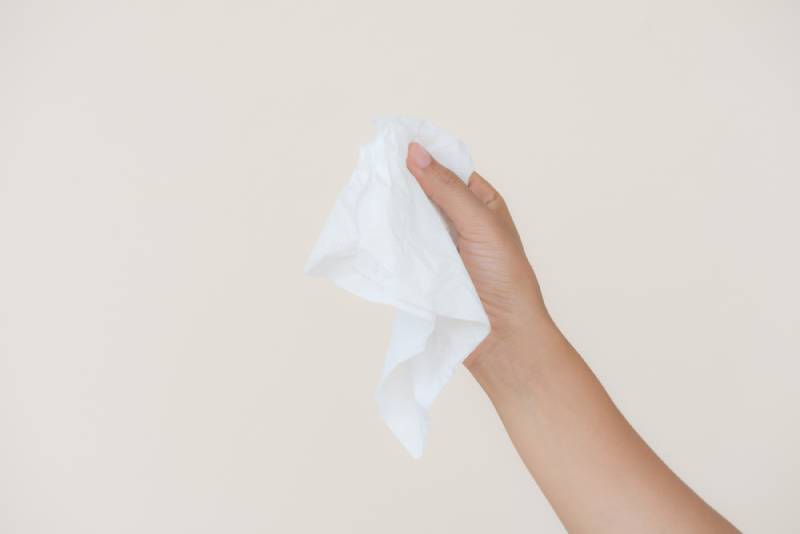
One of the simplest solutions for clogged ducts is putting wet and warm compresses on your nipples.
All you need is a warm washcloth which you’ll put under warm water.
Wring the excess liquid from the washcloth and put it directly on your nipples right after breastfeeding.
Applying moist heat prior to breastfeeding will take the pressure off your nipples and will provide you with a sense of relief right away.
Another great method is to put these wet compresses on your nipples before each feeding.
This way, your skin will loosen and when the baby starts to breastfeed, your nipples will open with more ease.
5. Removing the layer of skin

When your nipples pore gets clogged, small white dots around the nipples may become visible.
There are some effective ways to relieve the epithelial layer of skin and to relieve the obstruction.
However, this is not something you can or should do alone, in your home environment. You’re not an expert and you could just create a bigger problem.
Instead, go see your IBCLC or a health care provider. They’ll use a sterile needle or a gentle abrasion to help you out with your nipple bleb problem.
A small granule will probably pop out. Or, if your IBCLC or a health care provider uses firm compression, a stream of milk might gush out, relieving you of your pain.
At first, this might sound like a painful method but trust me – it is not.
Yes, it will be painful if you do it alone since you could miss the spot and sting yourself with the needle in the wrong place.
Besides, you could also cause a serious infection if you don’t use a sterile needle.
However, when medical experts do this, you’ll feel no pain whatsoever. The entire procedure will be performed safely and you’ll feel better in no time.
6. Milk expression
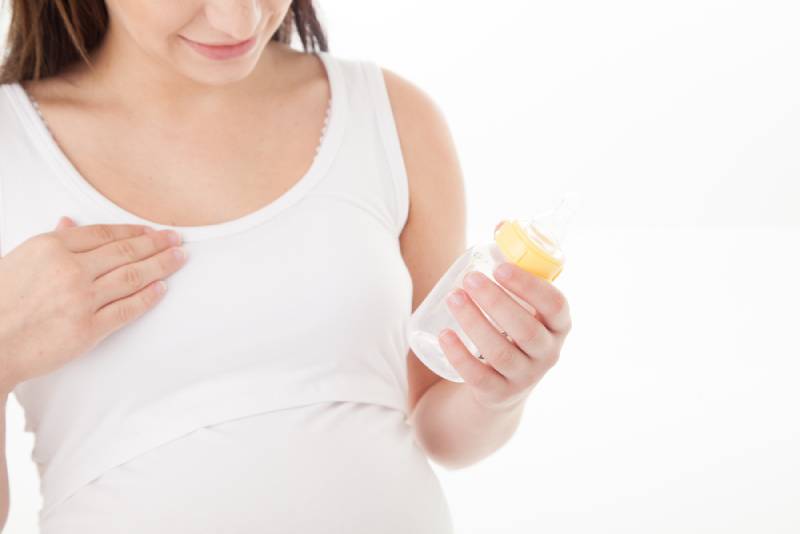
Since poor latching is one of the most common causes of clogged nipple pores, it is quite logical that regular milk expression can help you with this issue.
The best part is that this method doesn’t only help you immediately afterward – it is also an effective way to prevent the reappearance of the nipple bleb problem.
What you need to do is try hand expressing before feeding your baby. When you do this, some pasty milk will probably come out.
At first, this might scare you.
However, this is good news. In fact, this stringy milk was causing the blockage and it’s great that it is finally out.
When you’re done, it’s safe to nurse your baby. You can also pump away, using a hospital-grade pump.
Also, when you start nursing, make sure to put your baby on the affected breast first. If that is not possible, use an electric breast pump which can also help you remove the milk bleb.
Another way of using your milk to your benefit is to apply it to your nipples directly in between nursing.
According to many experts, your milk has antibacterial properties, so it helps to prevent infection.
7. Antibiotics
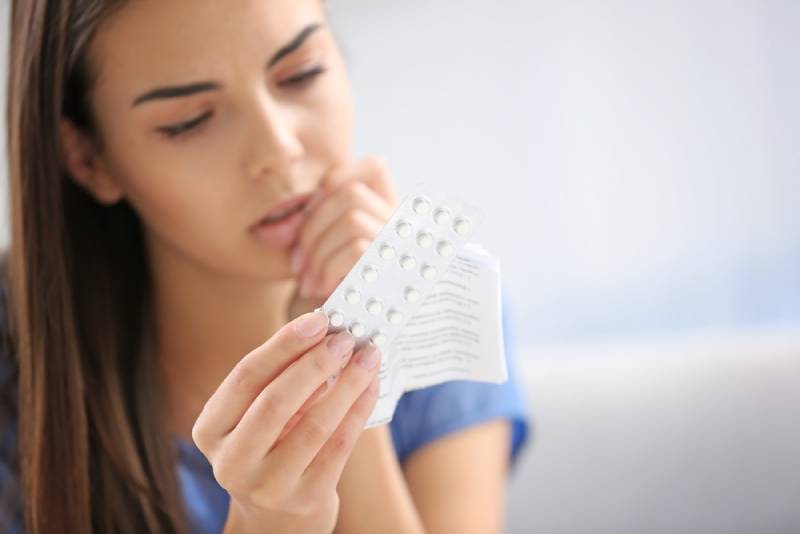
Even though mastitis doesn’t always require antibiotics, sadly, some moms are unable to find another way to resolve their breast inflammation and have to eventually start using them.
Antibiotics are necessary when mastitis carries a risk of infection.
You should talk to your doctor or lactation consultant about it if both of your breasts are clogged since that can cause pain you shouldn’t have to bear.
Also, go to see a doctor if you have a fever as that is one of the most common signs of infection.
Seek medical help quickly if you notice blood in your milk or red streaks around the wound.
Don’t worry – this isn’t anything alarming. However, in these cases, it’s better to treat your condition accordingly, to avoid any complications later on.
8. Breastfeed more often

Something that can help you with your plugged ducts is the habit of breastfeeding more often.
Frequent nursing will stimulate breast milk flow through the ducts.
What is important here is to keep your baby in the right position while breastfeeding. Make sure that the baby’s mouth is around the blister.
The key is for the baby to suck directly over the blister, in order to reduce the pressure and provide you with relief.
9. Change your diet

Sometimes, your plugged ducts are just the consequence of something going wrong inside of your body.
So, if you want to effectively treat it, you have to heal the cause.
The best way to do this is to perform detoxification of your entire body. Of course, since you’re breastfeeding, you can’t do anything too aggressive.
Nevertheless, what you can and should do is make sure you eat as healthily as possible.
Many moms reported that a simple change of diet helped them with inflammation around their breast tissue.
RELATED: 7-Day Breastfeeding Meal Plan For Great Health [+Free Printable]
Basically, what you need is to get as much lecithin as you can. Lecithin is a fat, essential for your cells.
It can be found in whole foods, especially in eggs, red meat, fish, cooked green vegetables, soya beans, broccoli, and seafood.
Also, you can take lecithin supplements to help stop your milk from clogging.
10. Ice packs/ pain relievers
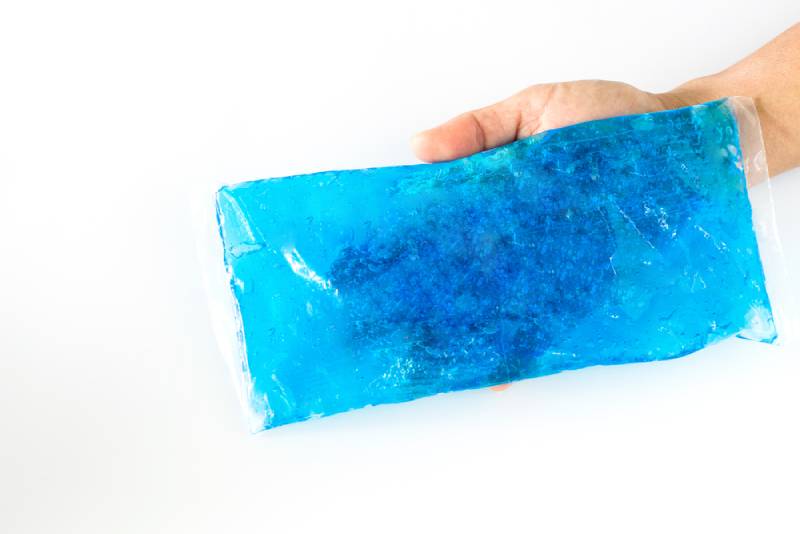
Finally, if you feel breast pain, the trick which will bring you immediate relief is putting ice packs on the affected area.
Apply them immediately after nursing to treat your breast pain.
Also, pain relievers such as ibuprofen or acetaminophen have proven to be effective. Just be careful because not all pain relievers are safe for nursing women.
However, you can take ibuprofen or acetaminophen as long as you don’t suffer from asthma or stomach ulcers.
Don’t exceed the recommended dose and only use it for as long as it’s necessary.
5 Causes Of Clogged Nipple Pores
1. Pregnancy
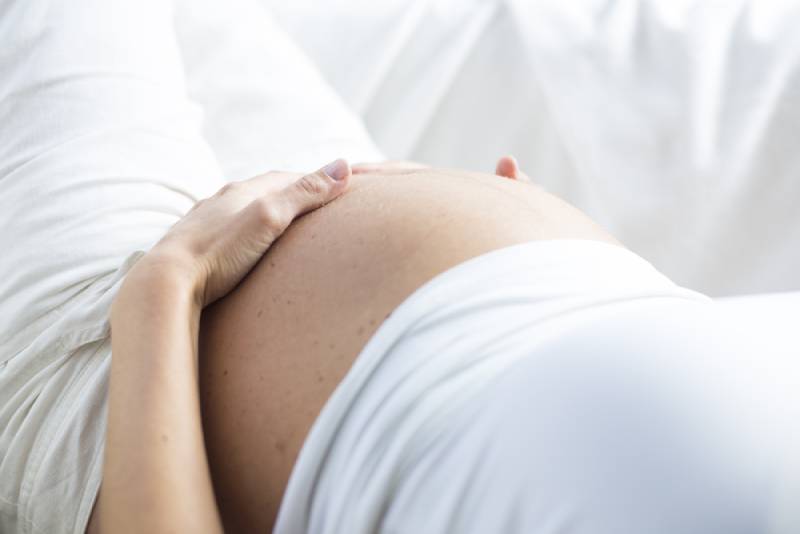
You’re already familiar with the fact that your hormones drastically change during pregnancy.
However, you probably had no idea that it could be the cause of your blocked nipple pore.
You see, before you breastfeed, small glands appear around your areola.
Their purpose is to lubricate your nipples and alert you to the fact that it’s time for your baby to nurse again.
Well, when you’re pregnant, your hormones affect these bumps and make them bigger, which might create inflammation of your breast tissue.
This is nothing to worry about and it will go away with time.
2. Breastfeeding at the wrong angle

Another seemingly unimportant thing that might cause your blocked ducts is if your baby is nursing in the wrong position.
The best way to reduce the pressure is to hold your baby in positions called the football hold or a cradle hold.
The correct angle for nursing will stimulate the milkflow through the milk duct and will help you get rid of your plugged ducts.
3. Pressure on your breasts

Underwire bras or tight bras which put pressure on your affected area could also be the cause of your blocked ducts.
They irritate your nipples and can influence the formation of clogged ducts.
It doesn’t matter if you’re dealing with nipple blebs or not – make sure to always wear comfortable bras, especially while you’re breastfeeding.
Avoid tight bras and underwire bras.
Instead, always choose those made of natural fabric and the ones that don’t irritate your nipples, breasts, or skin in general.
4. Poor latching on/oversupply

The number one reason for mastitis is an oversupply of milk. Blocked ducts happen when the baby isn’t latching properly and the mother has an excessive milk supply.
A clogged pore on nipple can be caused by your baby’s tongue-tie or a weak suck.
If this is something your baby is struggling with, sadly, they can’t take the milk efficiently enough from your breasts.
Whenever your breast is not fully drained during nursing, it can cause an obstruction within the milk duct.
5. Thrush
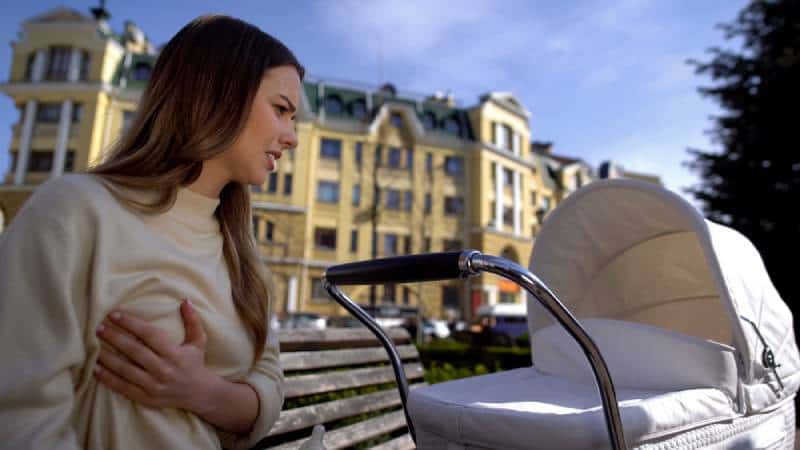
Thrush is a bacterial infection that manifests as a tiny white spot on the nipple. It usually looks like a pimple with a white or a yellow head.
These white spots can block one or more of your milk ducts and cause a clogged nipple pore. In this case, the best thing for you to do is to seek medical help.
You will probably get antibiotics for your condition.
If you’re a new mom who hasn’t experienced this problem before, you’ll probably be terrified at first.
However, I hope that now you know that many moms face the same issue, you’ll feel a little bit of relief.
Especially when you know that this can be resolved without much trouble.
Like this post? Please share or pin it for later. You can also stay in the loop and follow us on Facebook, Instagram or Pinterest.
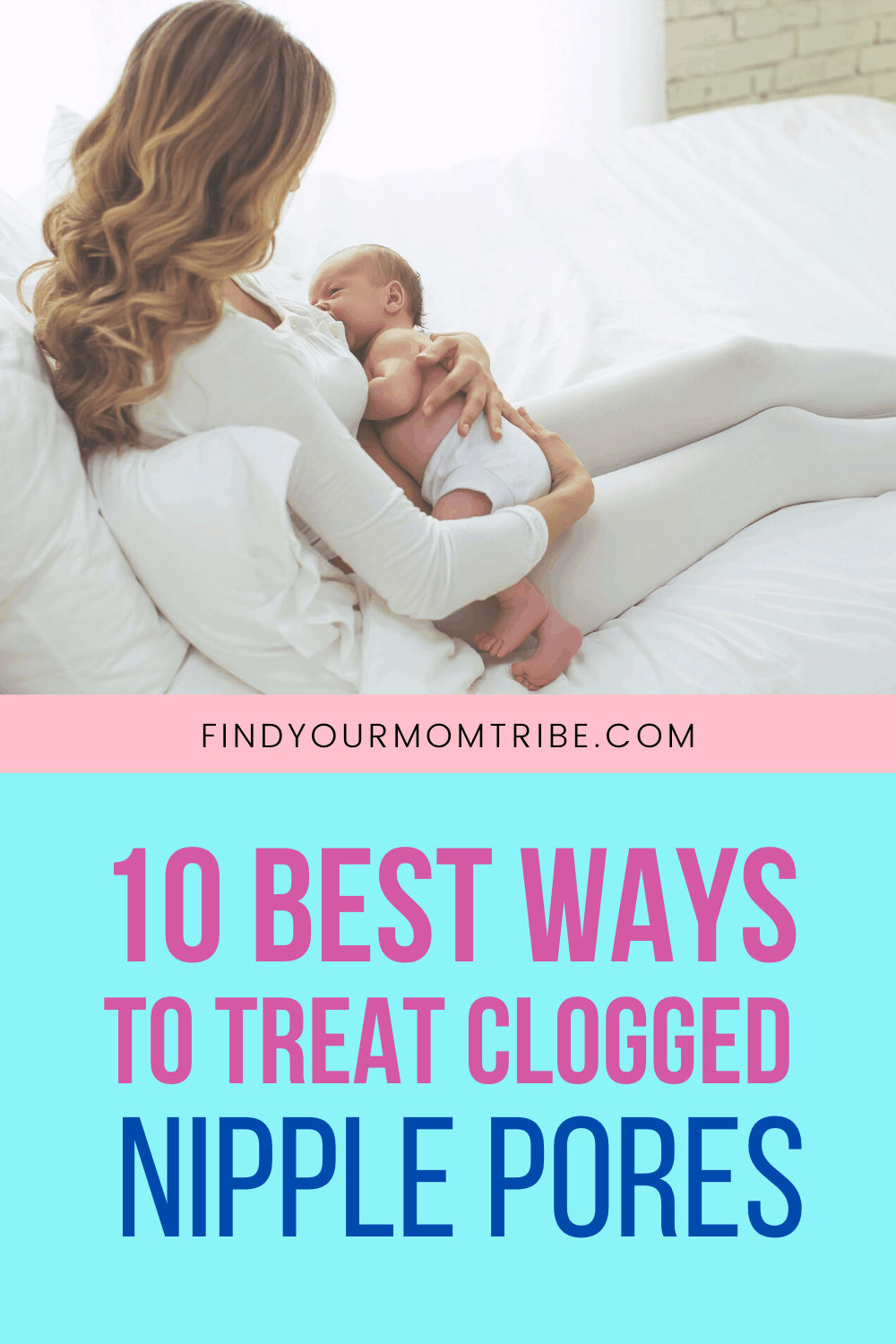
This post contains affiliate links. Please see our full disclosure for more info.

